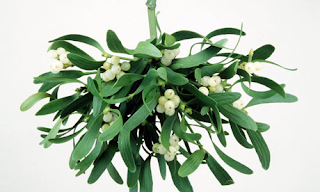As part of our 125th Anniversary celebration at Stein Your Florist Co. we are sharing a year of floral education, November 1, 2012 thru October 31, 2013. Each day we will post something new on our Facebook page to share our knowledge of our favorite things, flowers and plants and we'll be updating our blog every 5 days or so. No need for pencils and notebooks, just sharing some simple lessons in floristry.
 |
| Hemiparasitic Mistletoe |
Day 42 - Kissing under the mistletoe is first found associated with the Greek festival of Saturnalia and later with primitive marriage rites. They probably originated from two beliefs. One belief was that it has power to bestow fertility. It was also believed that the dung from which the mistletoe would also possess "life-giving" power. In Scandinavia, mistletoe was considered a plant of peace, under which enemies could declare a truce or warring spouses kiss and make-up. Later, the eighteenth-century English credited with a certain magical
 |
| Mistletoe |
 |
| Red Poinsettia |
 |
| Poinsettias are NOT poisonous |
Day 45 - In nature, Poinsettias are perennial flowering shrubs that were once considered weeds. Poinsettias are not frost-tolerant. They will grow outdoors in temperate coastal climates, such as Southern California beach communities. In the ground, they can reach 10 feet tall.

